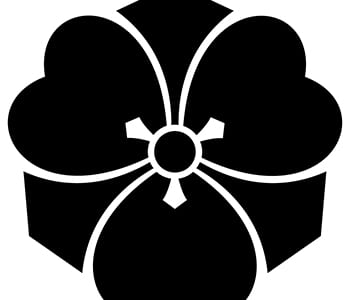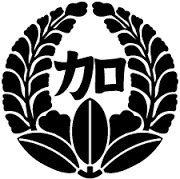
Best Way to Learn Japanese – This article is for whom wants to learn Japanese, but doesn’t know where and how to start. We start with defining your goal, that’s the only way we can learn any language with a plan and less frustration. Also, we share with you the books and the list of effective FREE resources. Without further ado, let’s begin!
Table of Contents
1. The Best Way to Learn Japanese for English Speakers
There is much debate that Japanese is one of the most difficult languages of all or Japanese is much easier than you think it is…
Which one is it? Well, if you set your mind that is difficult, it sure will be difficult or you don’t care how people say and just go for it, you win.
By having another language, you can get the best of both worldviews, entertain different perspectives and go back and forth, which would give you diverse ideas about the world. Sounds cool, isn’t it?
Here’s three videos from the TED talk for your motivation and inspiration on learning a language. You might want to adapt some of their methods, they give us full of hints to find the best way to learn Japanese.
2. Set Your Goal First – Best Way to Learn Japanese
So you want to learn Japanese, good! But before we dive into the best way to learn Japanese, let us give you a question. What do you like to do with understanding Japanese?
-
- Make friends with Japanese?
- Order Japanese food fluently at the restaurant?
- Understand what your favorite Japanese anime in the original text?
- Travel in Japan and get to know the locals?
- Want to sound like a Japanese native in conversation?
What do you aim for by learning Japanese?
Most language learners do whatever in order to reach wherever which means they have no goal other than becoming fluent while they don’t decide what that really means.
The best way to learn Japanese can be even more effective when your goal is clear.
If your goal is to read a certain text, you need to plan to read a lot, but if your main goal is to have a conversation on a level you can express yourself and ideas well, speaking practice has to be on the top of your list.


Decide YOUR Fluent Level
Fluency? You want to sound like a Japanese native? Or you want to be effective enough to communicate with Japanese?
In this sense, you can handle your frustration by not raising your bar unrealistically high. Also, the important aspect of your goal is to have the deadline.
With a time-bound plan, let’s say a few months from today would make it practical. Setting a year or more is far too distant, it would curve your motivation only if you still remember you are learning.


How Do We Learn?
So whatever you desire to do by using Japanese, listen a lot and repeat them can help you get used to the language and build vocabulary.
We learn by visual, audio, and repetition so that we think Memrise is the best bet which helps you do them all beautifully.
Since the functional level, decoding a language begins in the ear where the incoming sounds are summed in the auditory nerve as an electrical signal and delivered to the auditory cortex.
Translation, listen a lot!
In Memrise, they have native speakers talking with videos and repetition of the same words and phrases randomly are programmed which make us possible to remember them with better chances.
In my personal case, what makes me frustrated the most about learning a language is you have the desire to practice.
However, finding yourself with no new words or phrases at the end of the day makes you feel uncomfortable and not really making any progress.
So that their website is designed to help you learn as quickly and effortlessly as possible based on the brain science.
They use memes to help you form vivid, sensory memories and optimize our memories growing stronger by repetition.
Ditch Perfectionism
All or nothing attitude would diminish your experience with learning.
You don’t need to learn everything to communicate with people. Skip anything that doesn’t seem useful or relevant to your goal.
You don’t have to practice every day for an hour, maybe 30 min, maybe 5 min, but if you keep practicing, you’d see the result.
The most frustrating thing about learning a new language is that the process that never ends.
This fact can scare you off and make you never start in the first place. That’s why we need a specific goal we can put an end.
Think about your own language which you don’t feel any difficulty or frustration in speaking or writing.
Do you know all of the words and phrases in the language? All the spelling and pronunciation? Never.
You only need to learn the basics and what your desirable topics require you, but no more than that.
It’s never enough just as any subject you would come to learn, so worrying about being perfect makes no sense.
Instead, focus on what’s important which is being able to communicate.
You might think you need to learn Hiragana (Japanese alphabet) and Katakana first, then Kanji characters…
I can assure you it’d be much faster to learn them AFTER you have some vocabulary, phrases, and knowledge of some sentences unless it is a prime goal for you to learn them alone.


MAKE MISTAKES!
Making mistakes is one of the best ways to learn Japanese. Why? Because making a mistake is the fastest way to remember the words and phrases.
By making mistakes, your memory would be fortified with it. Make sure you correct them by seeing the answer or having a native speaker.
If you are not making mistakes, you are not progressing.
It’s always an uncharted territory when you use the new language, that’s what improves your cognitive skill and overall brain functions.
3. Let’s Get Started! – Best Way to Learn Japanese
Ok, now you have the right mindset to embark on the best way to learn Japanese, we introduce you only the best.
As we see Memrise is the best tool we could ever use, let’s look several Japanese courses they offer in a certain order which maximize your learning ability.
Before you dip your toes in the water, let us give you the magic three words in Japanese.
- こんにちは (Konnichiwa) – Hello.
- ありがとう (Arigatou) – Thank you.
- ごめんなさい (Gomennasai) – I’m sorry.
These are the very basic words you ever need to start. You remember them? Now, let’s begin!
Learn Basic Japanese
The thing about learning any foreign language is not actually learning, but about getting used to it.
Except you learn a language for the sake of learning, you are working on them to communicate with the people, right?
Learn the basic stuff would make you have building blocks, which is one of the best ways to learn Japanese.
125 Most Useful Japanese Verbs
After you have some basic stuff, learning useful verbs gives you more powerful building blocks.
125 Most Useful Japanese Verbs
Basic Phrases and Core 1000 Words
Surprisingly enough, just having a native Japanese speaker won’t make you speak Japanese. Pave your way into the level you desire by memorizing these top 1000 would arm you with varieties of expressions.
Japanese Core 1000 (part1) (Memrise)
Beginners Japanese Grammar (JLPT N5 Grammar)
Beginners Japanese Grammar (JLPT N5 Grammar)
Only after you’ve learned basic Japanese, verbs and frequent words, the grammar comes in very handy.
This is the best part of being an adult, you can take advantage of grammar to make your sentence structure in varieties so you can make yourself understood better.
Again, you don’t need to know all the words or phrases in Japanese to speak out yourself, what you have to know is what you want to talk about, your topics.
Now you have the core building blocks, let’s put them together and make a meaning out of it.
Expressing yourself in Japanese gives you more ideas about you and it makes you want to learn more about its culture.
4. Texts of Your Own Interest – Best Way to Learn Japanese
After you’ve gone through basic and essential words and phrases, it should be much easier to work on your favorite texts of your interest.
This is absolutely the best way to learn Japanese.
At this point, you understand that Japanese is a vehicle for learning more about a subject, ideas or different point of view.
Whatever you choose as your text, the material should be relevant to your interests.
It’s easy to find them by reviewing what you do most of your time, where your focus is, any texts which claim works well with others doesn’t necessarily work well with you.
So that finding your texts would tell you where your interests and values are which is a valuable experience itself.


Know Your Desires, Topics, and Scenes
Once you are speaking the language, you would understand the grammar far easier. It’s the best way to learn Japanese to know your desire.
Have a list of subjects and topics of your favorites (your thoughts on new books, current projects you are working on, fashion, food or your plan for the next vacation) and bring them up in the conversation.
Introduce Yourself
This is something you would do over and over again with someone you encounter for the first time, so it’d be like an elevator pitch you can hone to introduce yourself effectively to a new person.
You may start a conversation by asking a native speaker or a teacher over the holiday and tell them what you did.
Then you might share what you were working on at the time and expressing your ideas about it.
The course from Memrise can help you introduce yourself in Japanese fluently.
Also, you can learn Hiragana, Katakana, and some Kanji as well.
Japanese 1 (Memrise)
Intonation and Accents
Aside from the pronunciation, intonation and accents are what makes one sound like a native.
If sounding like a native is not your goal, you can skip working on to refine them.
Still, it’s always good to pay attention how native speakers sound in sentences. So you can make yourself understood in Japanese even better.
Modeling the same sex and same age as you would make your Japanese sound natural.
You can watch them directly or watch videos of natives, pay attention to facial expressions and mimic them the way they talk. Is surely is the best way to learn Japanese to mimic the native.
5. Free Resources to Start With – Best Way to Learn Japanese
There are many resources for language learning if you look up on the internet.
Some costs hundreds and some even thousand dollars while some valuable resources are for free.
The price corresponds to the quality? Not necessarily. What counts is if it’s designed to learn and remember well based on the process we learn and remember new things.
Otherwise, thousands of lists of vocabulary or phrases mean nothing.
- Japanese Courses at Memrise: they offer you not just basic courses, but varieties of them such as Japanese for Anime, Chat, and some naughty words as well, make sure you satrt with easy ones for you.
- Duolingo (It’s announced to be available from May 15, 2017): their short skits are good for commute or any short period of time you can find for your learning.
- Forvo Any words you want to know how to pronounce, Forvo will help you.
- jisho A simple and powerful Japanese-English dictionary that gives sample sentences as well as both kanji and kana translations.
Also, to make yourself immersed with Japanese, you can check what’s trending on Youtube in Japan right now.
Finding cool blogs or other popular sites on Alexa’s ranking of the top sites in Japan would be a great idea for improving your reading skill and cultural input.
6. Test Yourself – Best Way to Learn Japanese
If you feel you have acquired some Japanese language skills, taking a test would be a good indicator to tell you where you are now on your Japanese learning journey.
Japanese-Language Proficiency Test, they offer a reliable means of evaluating and certifying the Japanese proficiency of non-native speakers since 1984.
JLPT certificates offer various advantages, ranging from recognition as academic credit and graduation certification at schools to preferential treatment at companies and the acknowledgment of qualification in society.
We have seen so many “best way to learn Japanese”, every one of them can make your learning Japanese more effective.
Always come back to the first desire you had, why you began learning Japanese and work on them that in mind.
The last advice is REMEMBER TO TAKE A BREAK! You learn Japanese to achieve your certain goal, but not to be burned out.
As long as you understand just one more thing today than you did yesterday, you sure are making progress! It will all come together.
Tanoshinde!
References
12 Rules for Learning Foreign Languages in Record Time — The Only Post You’ll Ever Need (tim.blog)
The Brain Benefits of Learning a Second Language (BE BRAIN FIT)
Related Article
Japanese Onomatopoeia: The Mede-up Words Convey Perfect Subtlety








Add comment